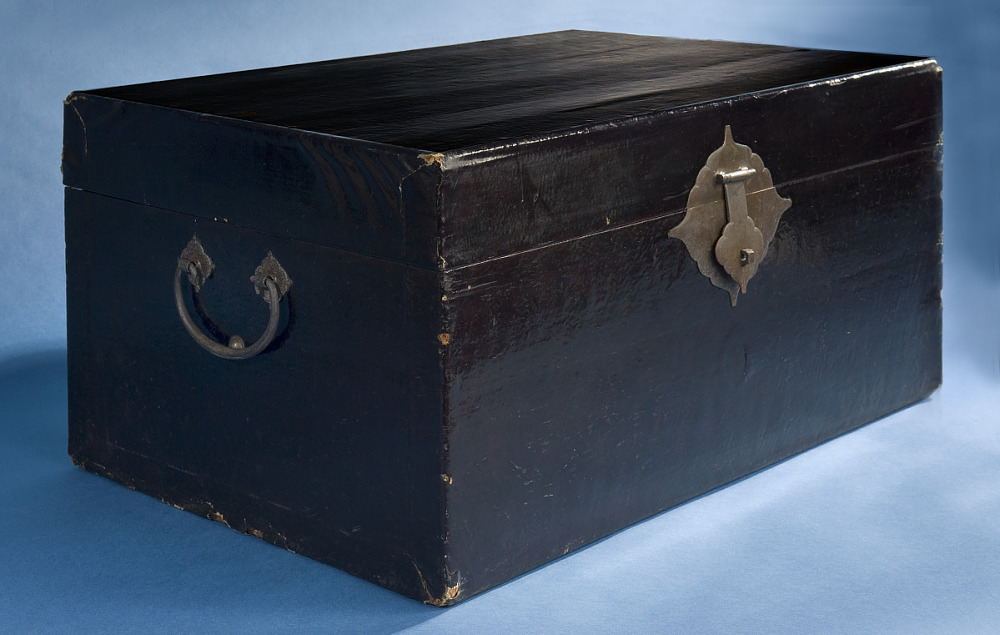As COVID-19 deaths spiked in 2020, Suzanne Firstenberg’s public art installation "In America: How could this happen…"
History Explorer Results (1131)
Related Books (0)

Grade Range:
K-12
Resource Type(s):
Artifacts, Primary Sources
Date Posted:
9/29/2008
This hand-modeled and molded, unglazed red earthenware pitcher honors Frederick Douglass, "Slave Orator/ United States Marshall, Recorder of Deeds D.C./ Diplomat."

Grade Range:
K-12
Resource Type(s):
Artifacts
Date Posted:
9/24/2009
The shofar, one of the earliest known musical instruments, is usually made from a ram's horn. Used in biblical times to signal important events, it is also blown on High Holy Days (10 days in the fall of the year). It is sounded many times during the services of Rosh ha-Shanah (the Jewish New Yea

Grade Range:
K-12
Resource Type(s):
Reviewed Websites
Date Posted:
9/25/2008
This website is a must-visit for students and teachers studying the history of the White House, or the presidency itself. The site contains timelines, historical photographs, historical tours, as well as links for further research. In addition, the site has entire sections devoted to studen

Grade Range:
K-12
Resource Type(s):
Artifacts, Primary Sources
Date Posted:
9/3/2008
This tortoiseshell woman's hair comb dates from the 19th century. A precursor to plastics, tortoiseshell and horn were common materials used in combs since they could be made soft and moldable by heating. As they cooled, they would harden and keep their new shape.

Grade Range:
K-12
Resource Type(s):
Artifacts
Date Posted:
4/4/2016
Part of the appeal of Coca Cola has always been cultural not just taste. In the early 1900s Coca Cola expanded to international markets creating a Foreign Department in 1926. This ad promotes the notion that consuming Coca Cola is sophisticated and modern. Close inspection of this “Shanghai lad

Grade Range:
K-12
Resource Type(s):
Artifacts
Date Posted:
11/1/2016
Shave Head uses a two-level drawing shows a buffalo hunt with four wounded animals, and a separate hunt and the wounding of an elk. The Cheyenne warriors wear full headdress and four of the five also wear their mountain lion bow and quiver, symbolically powerful pieces of hunting gear.

Grade Range:
K-12
Resource Type(s):
Artifacts
Date Posted:
4/16/2018
This is one of the first models of Liberty cast in the United States. Often described as the American Committee Model, this statuette was produced in the tens of thousands. It was sold to subscribers to finance the construction of a pedestal for the full-size statue in New York Harbor.

Grade Range:
K-12
Resource Type(s):
Artifacts, Primary Sources
Date Posted:
9/3/2020
In 1906 Ng Shee Lee packed her clothes and belongings in this trunk and left China for America. It was a difficult trip. She slept next to the noisy engine room; arriving tired and sick in San Francisco she was met by the devastating 1906 earthquake. Ng Shee then made her way alone by train across C

Grade Range:
K-12
Resource Type(s):
Artifacts, Primary Sources
Date Posted:
12/13/2010
Physical Description
Blue wool coat with gold trim on cuffs. Cap with wool body and gold-colored band. Naval insignia.
Specific History
Service coat and cap worn by Captain Charles V. Gridley at the Battle of Manila Bay.
General History
An Annapo

Grade Range:
K-12
Resource Type(s):
Artifacts, Primary Sources
Date Posted:
3/12/2012
Sixteen-year-old Judy Garland wore these sequined shoes as Dorothy Gale in the 1939 film classic The Wizard of Oz. In the original book by L. Frank Baum, Dorothy's magic slippers are silver; for the Technicolor movie, they were changed to ruby red to show up more vividly against the yell









